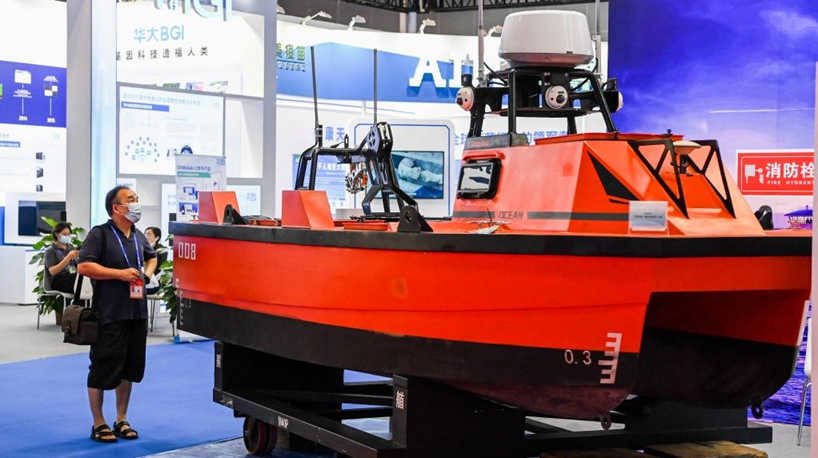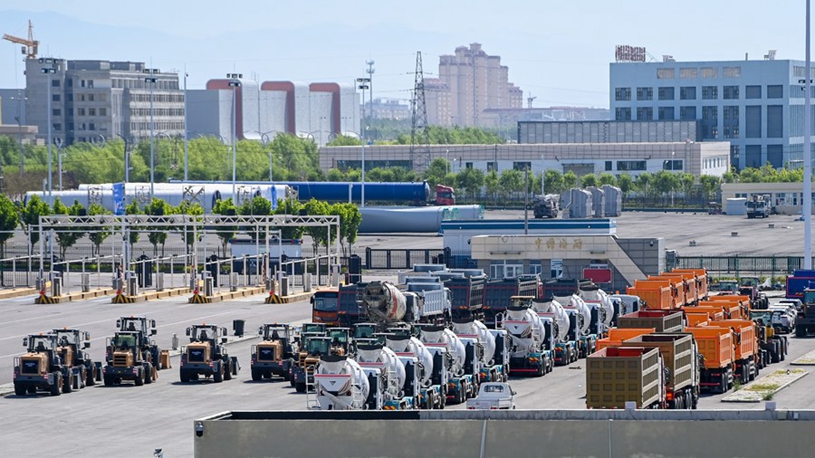* Over the past decade, central China's Hubei Province has witnessed a tech boom, with rapid development in emerging industries including optoelectronic information, intelligent manufacturing and high-tech services.
* The East Lake High-tech Development Zone, also known as the Optics Valley, is an emerging high-tech cluster in Wuhan, capital of Hubei Province. It is the epitome of the province's innovation-driven growth over the decade.
* With the gathering of talents and innovative breakthroughs, the Optics Valley is emerging as a high-tech hub in central China, leading the optoelectronic information industry, while making advances in the fields of digital economy, 5G, artificial intelligence and the Internet of Things.
WUHAN, Sept. 22 (Xinhua) -- Before Yuan Houwang, 26, graduated with his master's degree in electronics and communications engineering in late June, the only jobs he had considered applying for were those in China's Optics Valley.
The graduate from South-Central Minzu University eventually landed his job at Chinese tech giant Xiaomi's Wuhan headquarters in the Valley, working as an air-conditioning hardware engineer.
"The Optics Valley is a land of youth and vigor," he said.
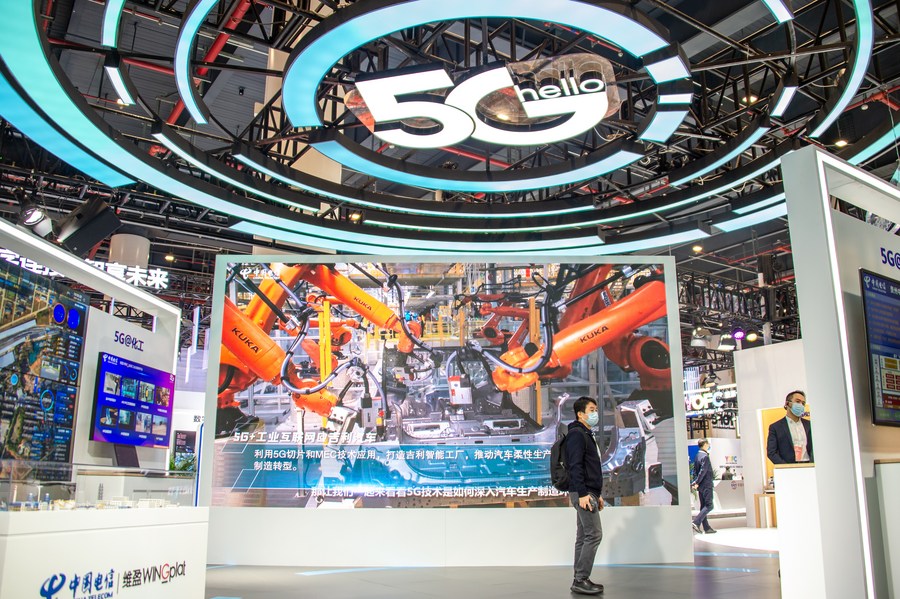
Photo taken on Nov. 20, 2021 shows the venue of China 5G+ Industrial Internet Conference at the China Optics Valley Convention & Exhibition Center in Wuhan, capital of central China's Hubei Province. (Xinhua/Wu Zhizun)
The East Lake High-tech Development Zone, also known as the Optics Valley, is an emerging high-tech cluster in Wuhan, capital of central China's Hubei Province.
Over the past decade, Hubei has witnessed a tech boom, with rapid development in emerging industries including optoelectronic information, intelligent manufacturing and high-tech services.
The province's GDP rose from 2.26 trillion yuan (about 324 billion U.S. dollars) in 2012 to over 5 trillion yuan in 2021. The number of high-tech enterprises in the province surged from 1,577 in 2012 to 14,560 in 2021, official data shows.
INDIGENOUS INNOVATION
The Optics Valley is the epitome of the province's innovation-driven growth over the decade. With the gathering of talents and innovative breakthroughs, it is emerging as a high-tech hub in central China, leading the optoelectronic information industry, while making advances in the fields of digital economy, 5G, artificial intelligence and the Internet of Things.
Statistics show that Optics Valley boasted 112,000 companies in 2021, of which more than 4,300 were high-tech enterprises.
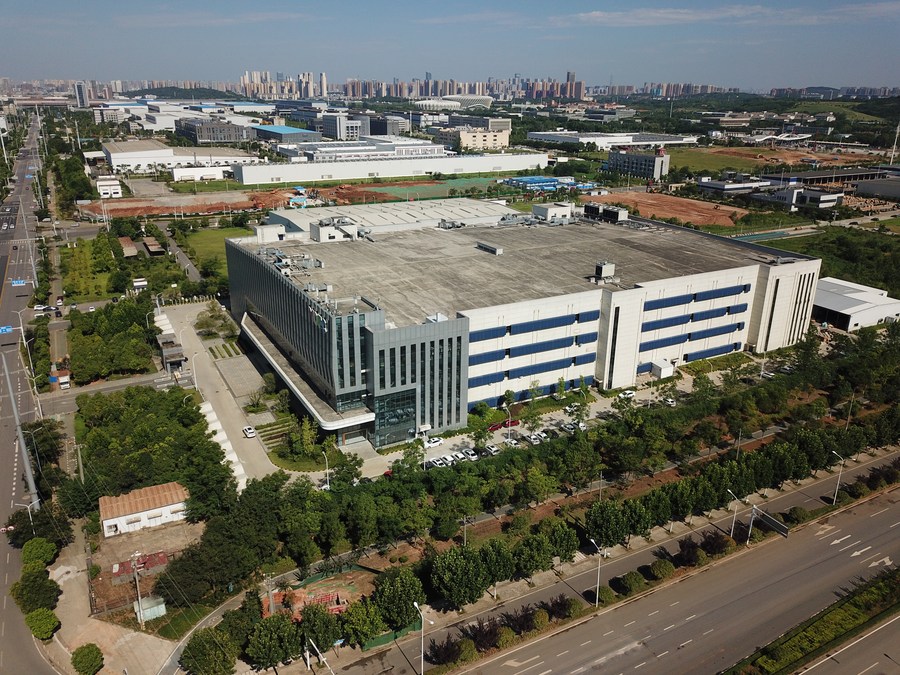
Aerial photo taken on July 11, 2022 shows an external view of Yangtze Optical Fibre and Cable Joint Stock Limited Company (YOFC) in Wuhan, capital of central China's Hubei Province. (Xinhua/Cheng Min)
At a plant of Yangtze Optical Fibre and Cable Joint Stock Limited Company (YOFC), optical fiber preforms are softened at 2,000 degrees Celsius and pulled into optical fibers as thin as a hair at a speed of 3,500 meters per minute.
More than 10 years ago, China stepped up the construction of new optical fiber communication networks, but the domestic optical fiber and cable products were not aligned with demand.
"Back then, our raw materials and equipment were dependent on imported goods, which seriously constrained the industry in China," recalled Zhuang Dan, president of YOFC, adding that it was around that time that the company resolved to tackle the key techniques related to the fiber preform.
Over the past decade, YOFC repeatedly overcame technical obstacles to localize the whole production chain from preform to optical fibers and cables. Meanwhile, their products have been sold to more than 90 countries and regions worldwide.
The high-tech zone has also become an ideal choice for the new headquarters and research centers of tech firms. One of the bellwethers is laser giant HGLaser Engineering Co., Ltd.
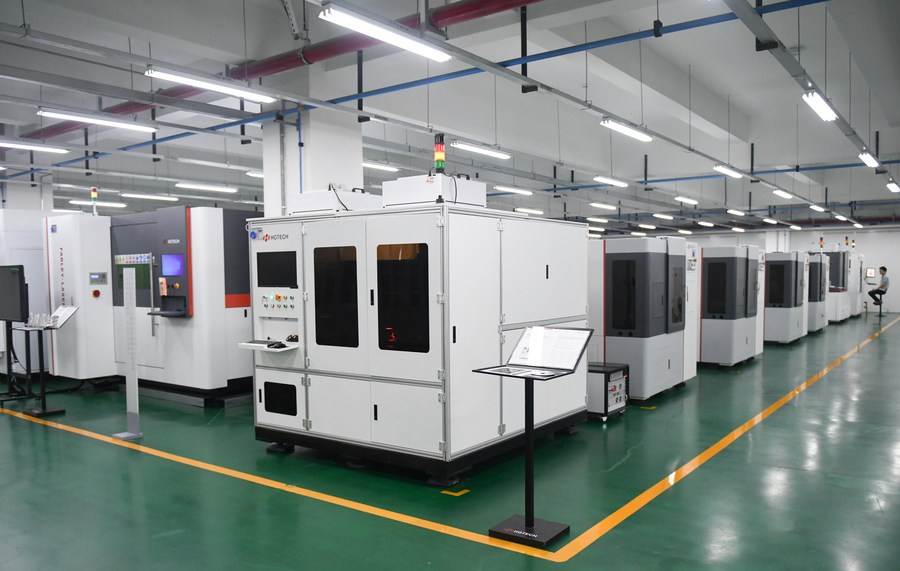
A staff member works at a workshop of HGLaser Engineering Co., Ltd. in Wuhan, capital of central China's Hubei Province, July 11, 2022. (Xinhua/Cheng Min)
As advanced industrial tools, lasers play an important role in upgrading the manufacturing industry by replacing traditional processing methods that lack efficiency and cause heavy pollution.
Deng Jiake, general manager of HGLaser, noted that it was very costly to purchase a high-power CNC laser cutting machine from overseas a decade ago, but thanks to the localization of nearly all core parts, the price has dropped significantly.
"We'll continue to advance the localization of more high-end technologies and benefit more enterprises in China with more affordable equipment," Deng added.
FUTURE BACKED BY TALENT
Innovation at the Optics Valley has solid backing from the rich education resources and talent pool found locally. Wuhan, with a large number of universities and research institutes, has more than 1.3 million college students.
According to Ye Zufu, general manager of HGLaser's welding product line, the development of laser technology involves multidisciplinary knowledge.
The company, like many others in the Optics Valley, works closely with experts in local academic institutions. Meanwhile, some universities have also rolled out tailored programs to nurture students that meet the needs of the high-tech zone.
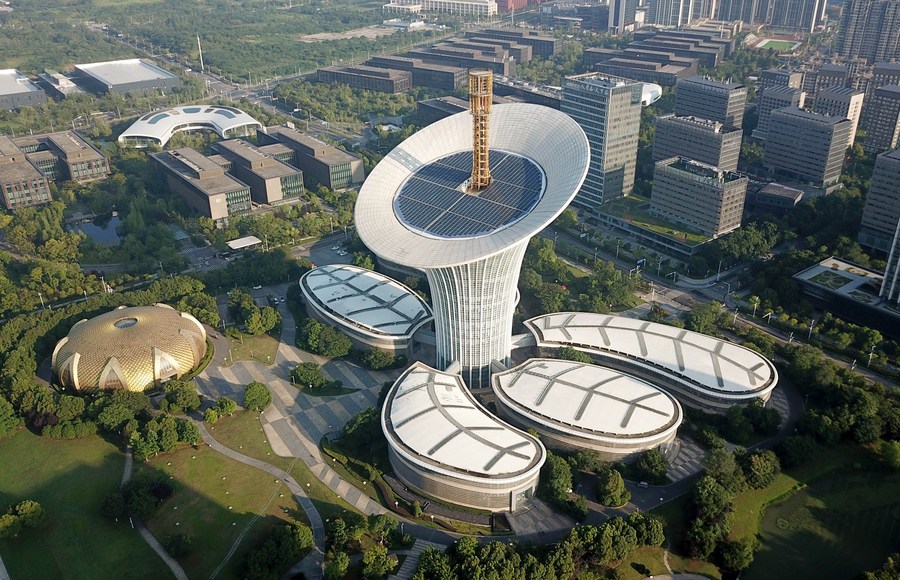
Aerial photo taken on July 9, 2022 shows the Wuhan Institute of New Energy building in Wuhan, capital of central China's Hubei Province. (Xinhua/Cheng Min)
"Over the years, our university has mustered talents in related disciplines to sustain the development of the optoelectronics industry in the Optics Valley, with strong technical and talent support," said Li Yuanyuan, Party secretary of Huazhong University of Science and Technology.
Meanwhile, with more and more tech giants like Huawei, ByteDance and Xiaomi settling in the Valley, the high-tech zone has retained more university graduates, who used to flock to first-tier cities such as Shanghai and Shenzhen.
Since 2017, the Optics Valley has attracted more than 560,000 university students to stay for work opportunities or to start businesses. In 2021 alone, more than 110,000 graduates chose to work in the zone.
Hubei plans to use the Optics Valley as a pivot to promote the coordinated development of a cluster of cities and build a world-class innovation hub, according to a plan released in 2021.
(Video reporters: Yu Guoqing, Fang Yadong; video editors: Liu Yuting, Zhang Yuhong.)■






